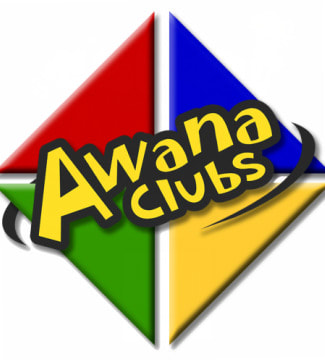Grand Prix - Rules and Tips
RULES
1. The race is for Sparks and T&T clubbers. You must be present for your car to compete in the race and design contests.
2. All cars entered must be constructed from the “Official Awana Grand Prix Car Kit”.
3. Cars raced in previous years are not eligible. All participating cars must be built specifically for this race.
4. Participants must use the axles, wheels, and wood supplies in the kit. Additional features (windshields, weights, decals, etc.) may be added as well as modifications to the starting block of wood.
5. The Awana name must be visible on the side wall of the wheels. No modifications can be made to the car wheels to reduce the width, diameter, or mass/weight.
6. The front of the car should not come to a point or slope upward so that the car can be properly held behind the starting peg.
7. The chassis should not be lower than 3/8 of an inch from the ground otherwise it will drag on the track’s guide rail.
8. After car check-in, no alterations of the car are allowed. This means that final preparation and lubrication must be done BEFORE check-in.
9. If you can not attend the check-in event, please have someone else submit your car.
10. All entrants must participate in the designing and building of their car. The car should NOT be totally designed and built by an adult.
11. Each car must pass a technical inspection (weigh in and size check) before it may compete.
1. The race is for Sparks and T&T clubbers. You must be present for your car to compete in the race and design contests.
2. All cars entered must be constructed from the “Official Awana Grand Prix Car Kit”.
3. Cars raced in previous years are not eligible. All participating cars must be built specifically for this race.
4. Participants must use the axles, wheels, and wood supplies in the kit. Additional features (windshields, weights, decals, etc.) may be added as well as modifications to the starting block of wood.
5. The Awana name must be visible on the side wall of the wheels. No modifications can be made to the car wheels to reduce the width, diameter, or mass/weight.
6. The front of the car should not come to a point or slope upward so that the car can be properly held behind the starting peg.
7. The chassis should not be lower than 3/8 of an inch from the ground otherwise it will drag on the track’s guide rail.
8. After car check-in, no alterations of the car are allowed. This means that final preparation and lubrication must be done BEFORE check-in.
9. If you can not attend the check-in event, please have someone else submit your car.
10. All entrants must participate in the designing and building of their car. The car should NOT be totally designed and built by an adult.
11. Each car must pass a technical inspection (weigh in and size check) before it may compete.
CAR SPECIFICATIONS
1. The maximum length is 7 inches.
2. The maximum width is 2 3⁄4 inches.
3. The maximum height is 3 inches.
4. Underside clearance of at least 3/8 inch.
5.Inside wheel to wheel clearance of at least 1 3/4 inches.
6. The maximum allowable weight is 5 ounces.
Your car will be weighed on the "official" scale during the check-in event, to determine that is has not exceeded 5 ounces.
Your car will be placed inside of a measurement box, to determine that it does not exceed the above dimensions.
On check-in day, be prepared to make any needed adjustments if your car exceeds the car specifications.
1. The maximum length is 7 inches.
2. The maximum width is 2 3⁄4 inches.
3. The maximum height is 3 inches.
4. Underside clearance of at least 3/8 inch.
5.Inside wheel to wheel clearance of at least 1 3/4 inches.
6. The maximum allowable weight is 5 ounces.
Your car will be weighed on the "official" scale during the check-in event, to determine that is has not exceeded 5 ounces.
Your car will be placed inside of a measurement box, to determine that it does not exceed the above dimensions.
On check-in day, be prepared to make any needed adjustments if your car exceeds the car specifications.
SPEED TIPS
1. Weight – winning cars generally weight the maximum of 5.0 ounces. The more weight, the more potential energy the car has, and thus the faster it will go.
2. Weight Placement – the weight should be concentrated as far back as possible, without causing the car to “pop a wheelie”.
1. Weight – winning cars generally weight the maximum of 5.0 ounces. The more weight, the more potential energy the car has, and thus the faster it will go.
2. Weight Placement – the weight should be concentrated as far back as possible, without causing the car to “pop a wheelie”.
- Plan a spot for adding weight. It could be a cut out into the block of wood. You may want to be sure that you can easily add or remove weight in order to comply with the 5.0 ounce weight limit.
- Weight options could include washers, coins, imbedded metal, fishing weights, pinewood derby weights, embellishments, etc.
- Axles – remove any burrs and polish to a mirror finish. Use a light lubricant, like graphite, on the axles.
- Wheels – trim the plastic stubs from the inside wheel edge and lightly sand. Lightly sand the wheel tread to remove any flat spots and plastic flashing. Be careful not to reshape or resize the wheels and if sanded too long or too hard the plastic will melt. Remember: the Awana name must be visible on all wheels.
- Aerodynamic Shape – aerodynamic drag is very small, but if you want to reduce all possible sources of friction, then choose a streamlined shape and sleek finish.

